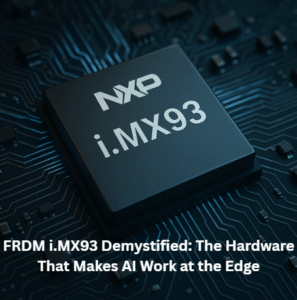Join Our Community Just Click Here
E/E Architecture In Automotive Vehicles
Table of Contents
Overview
In a car at a time more than 100 small or large electronic subsystems are present. Most of these subsystems are connected directly or indirectly in one way or another.
- Now virtualize that this is a car and it has an Airbag control system which is controlled according to the vehicle motion monitoring system. If Vehicle motion experiences a sudden break or impact, the Airbag control system will be turned on. For understanding, let’s say the Airbag control system is Node A and the Vehicle motion monitoring system is Node B.
Node B is situated at the front of the car and Node A is distributed on every seat of the vehicle. So Node B and Node A are connected directly to each other.
- But let’s say now there is one more Node C. Node C is a car Backlight. Now Node C and Node B are connected in a way if the vehicle motion experiences a sudden break then the car’s backlight has to be turned on immediately.
As Car’s backlight is at the back, Node C is at the back of Car and Node B is at the front of the car, so we have to connect Node C and Node B also. Now wiring to connect to Node B and Node C would be required more to take it from front to back. Whereas if we place Node B at the center of the car, then the connection of Node A and Node C would be comparatively easy to do and fewer wires would be used.
You can see the electronic subsystems used in cars are distributed across the vehicle. The arrangement of these electronic sub-systems, their architecture of placement and connection is what going to be the topic of today’s video. How the car electronic subsystems are connected, is what is gonna be the topic of today’s video.
Surrounded by large-scale technological requirements (ADAS, connected vehicles, Software Defined Cars, Vehicle to Vehicle, Electrification, etc.) established OEMs and semiconductor companies are innovating and differentiating via the architecture designs for the arrangement of these electronic subsystems in a car.
In the last video/blog, we learned about different electronic/electrical sub-systems that are there in the car.
Now we are going to dwell on architecture on how the different electronic/electrical sub-systems are arranged in an automotive vehicle.
What is E/E Architecture
E/E architecture is the terminology for arrangmant of elecrical/electromcnis used in car.
E/E Architecture organizes and integrates a vehicle’s electrical and electronic systems, including hardware and software components, to ensure they all work together seamlessly. E/E Architecture involves the design of the arrangement of electrical and electronic systems that control various functions of a vehicle, such as a powertrain, safety systems, infotainment, climate control and etc. E/E architecture is also termed as vehicle architecture.
The E/E architecture is an arrangement of different components of a vehicle, all combine to make up the vehicle architecture. These components are :
1) electronics hardware
2) network communications
3) software applications, and
4) wiring involved to connect different electric/electrical sub-parts of the system.
Why is E/E Architecture needed?
Okay so now we have understand what is E/E architecture, now lets dwell into why do we need E/E architecture concept in automotive vehicle;s.
Integration of computing technology into every aspect of the car has transformed how automotive OEMs approach design, engineering and manufacturing of automotive electrical sub-systems. Concurrently, the introduction of sensors into the vehicle architecture further accelerated the need for greater computing power to process and analyze the resulting data.
The advancement toward connected cars led to a divergence in how carmakers approached the communication architecture of a vehicle’s electronics.
The result of this innovation and integration is a tremendously complex system of electronic control units (ECUs), sensors, actuators, and wiring to connect it all together. The size and complexity of these architectures create new challenges for automotive OEMs and their suppliers. In this environment, the importance of the underlying E/E architecture is paramount.
The new generation of automotive consumers expect constant internet connectivity, a fully customizable driving or riding experience, as well as personalized entertainment and functionalities. Simultaneously, consumers expect to feel safe and secure, while enjoying the latest, modern features on-demand, in real-time and over-the-air as they download different applications and services from vehicle “app-stores”.
In fact, the vehicle is no longer the focal point in the consumer’s mind, rather it is the mobility service or mobility experience that it provides.
Different aspects of E/E architecture are sensors, microcontrollers/processors, networking protocols, wiring and power distribution.
All aspects of the E/E architecture occupy a larger role in enabling core vehicle functionalities. As a result, all aspects have grown in sophistication to meet these increased demands. Microcontrollers/processors have become more powerful to process the data coming in from larger sensor arrays using increasingly capable software. Meanwhile, vehicle networks have to manage the communications in this intricate system of sensors and controllers.
The result of these innovations and integration is a tremendously complex system of electronic control units (ECUs), sensors, actuators, and wiring to connect it all together. The size and complexity of these electrical/electronic subsystems create new challenges for automotive OEMs and their suppliers. These challenges will only become more intense as companies continue to advance vehicle technologies, particularly in the automated driving space. In this environment, the importance of the underlying E/E architecture is paramount.
Surrounded by large-scale technological change, have forced established OEMs to innovate and differentiate via the E/E architecture for automotive sub-systems. This means creating architectures that are scalable across vehicle platforms, flexible to future technologies, and reliable over extended lives in the field.
Types of E/E Architecture
There are 3 types of E/E architecture in automotive:
- Flat architecture
- Domain Architecture
- Zonal Architecture
Up until the past decade, vehicle electronics used a flat architecture where embedded ECUs operated together in a limited way.
Flat Architecture
In the context of automotive electronics, a flat architecture refers to a system where embedded electronic control units (ECUs) act as an individual system.
The flat architecture was characterized by limited communication between ECUs scattered throughout the vehicle. As you can see communication between ECUs is not directly possible from the photo below.
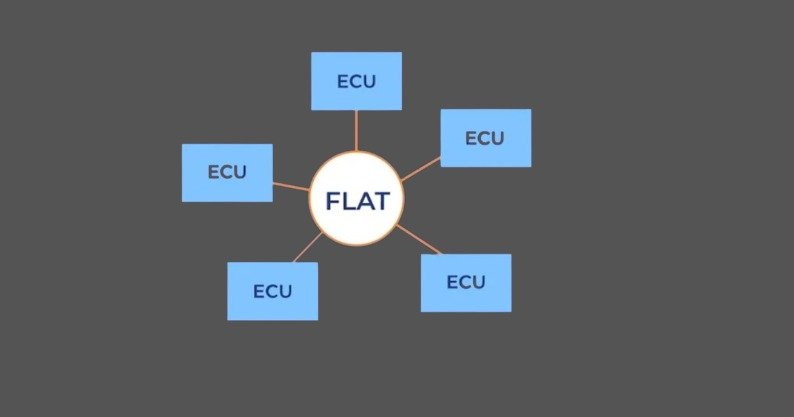
Microprocessors have been slowly incorporated into the automobile since the 1970s, when original equipment manufacturers (OEM) began to integrate electronic fuel injection (EFI) systems and on-board diagnostics. Year after year they have contributed to the safety, efficiency, and comfort of the car, by integrating ECUs one by one into the vehicle. This has resulted in flat architecture getting widely accepted. Simple idealogy in the 1970’s was to: automate the parts of the vehicle via ECU to introduce new features in the car and implement them via ECU’s integration.
Everything needed to implement in the electrical/electronic system of the car, from sensing to actuation, is connected to an ECU. ECUs are built based on some microcontroller/microprocessor and they are normally connected via a bus, such as CAN with each other. Once implanted, the software is only updated if a problem is detected and only after considerable effort, testing, and a vehicle recall.
This approach did not optimize for wiring, and the ECUs operated together in a limited way. This approach was used until the past decade when the integration of computing technology was not there in every aspect of the car. To virtualize flat architecture, it somewhat looks like this:
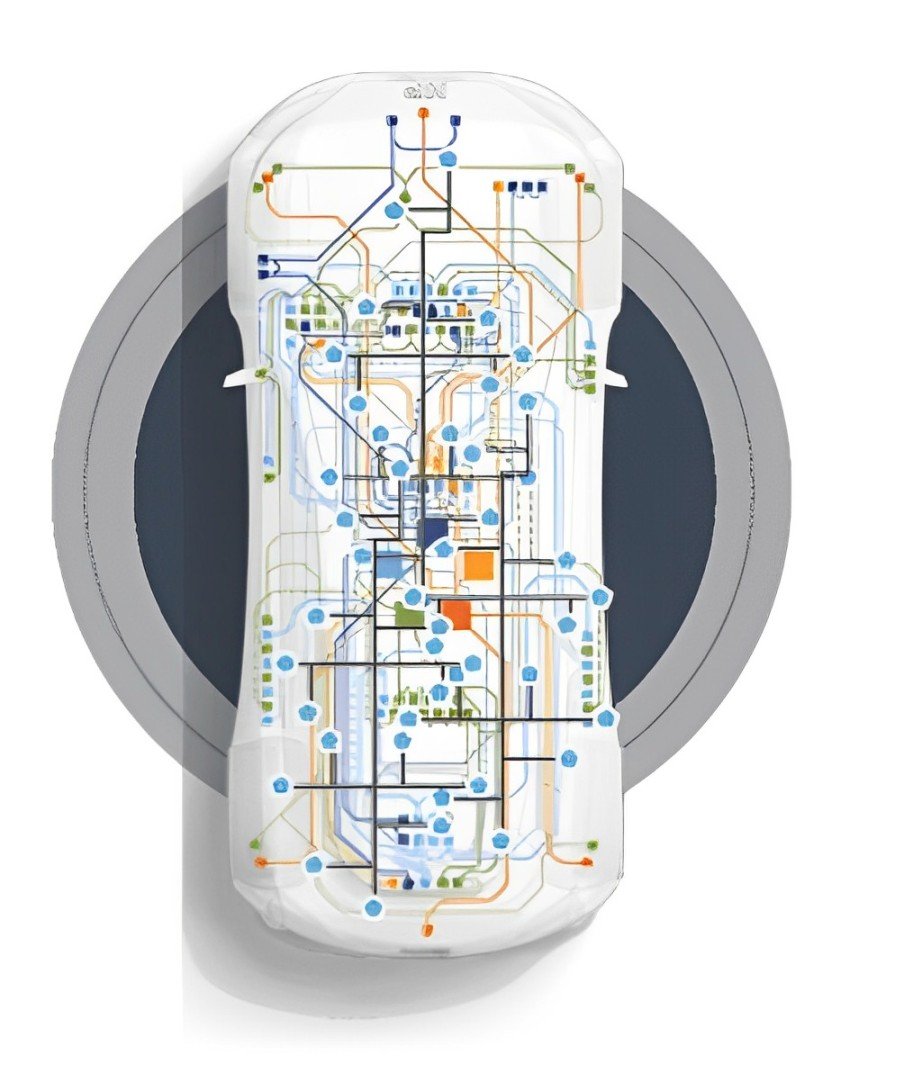
Concurrently, the introduction of sensors into the vehicle architecture further accelerated the need for greater computing power to process and analyse the resulting data. These new aspects of the vehicle’s brain led to transformation from flat architecture to domain architecture to newer zonal architectures.
As vehicles became more intelligent, with sensors and increased electrification, the flat architecture was no longer feasible. Not only did engineers need greater computing resources to handle the sensor data, but to make a smarter vehicle, engineers also needed the disparate electrical subsystems to become more interconnected.
Domain Architecture:
Current E/E architectures primarily employ a “domain architecture” that brings together the domains of ECUs that perform similar processing. Automotive Vehicle is divided into 5 domains, that cover all the electrical/electronic components of the car. These domains are the HEV/EV Domain( also termed as powertrain domain), Chasis Domain, Body Domain, HMI Domain, and Telematic Domain.
So in Domain Architecture, arrangement is based on these Domains and all of these domains are connected to the central gateway for communication with each other.
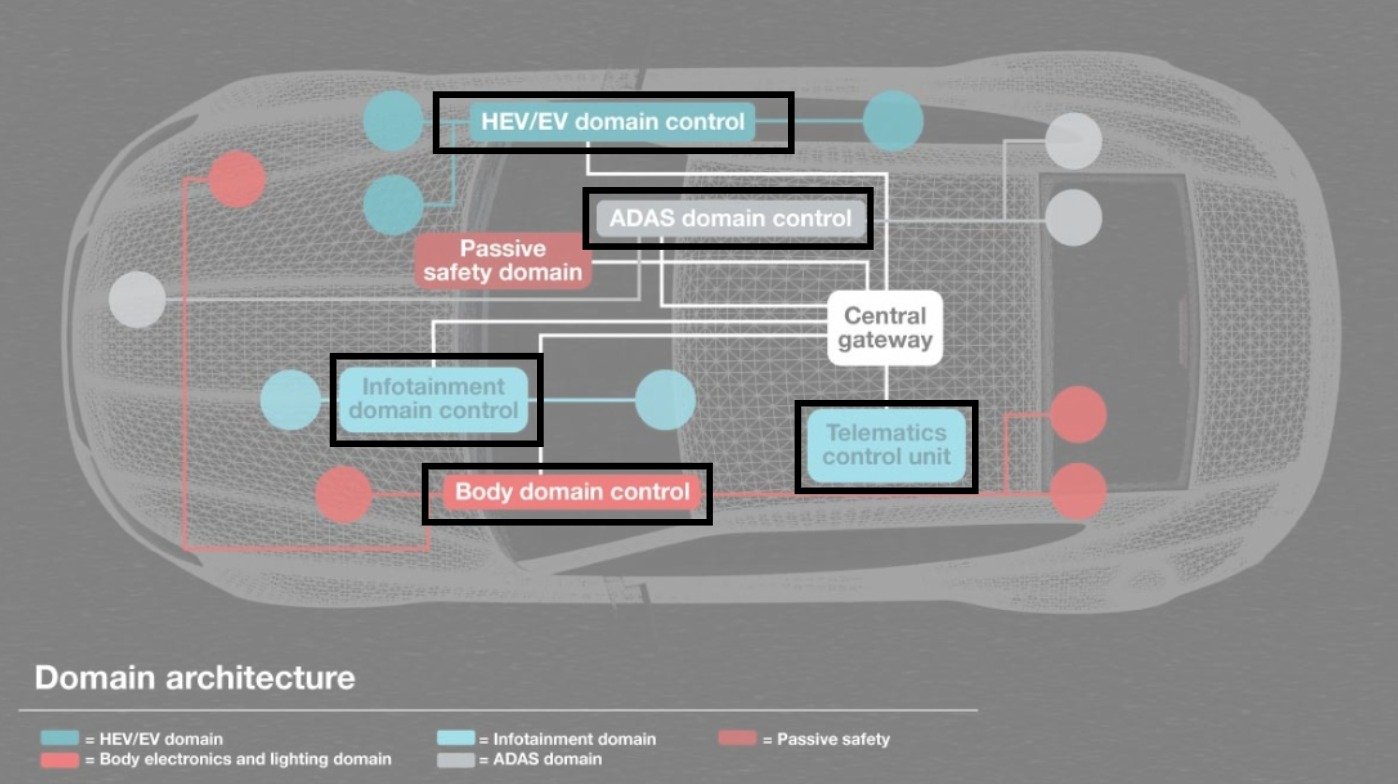
For example, the ECUs of the engine system are integrated into the powertrain domain, and ECUs for sliding doors and power windows are integrated into the body domain. Both the Powertrain Domain Controller and Body Control Domain Controller are connected to the central Gateway.
Thereby reducing the number of ECUs and wires (electrical wiring). Reducing the number of parts also contributes to a reduction in vehicle weight and development costs.
Examples of New Vehicles Using Domain Controller Architecture
Examples of New Vehicles Using Domain Controller Architecture
BMW X7
features a centralized domain controller known as the Integrated Chassis Management (ICM) responsible for coordinating various functions such as driver assistance, park assist, and remote control parking
Volkswagen ID.3
uses a domain controller for battery management, power electronics, thermal management, and vehicle dynamics, and a cockpit controller for infotainment.
Mercedes-Benz S-Class
features centralized domain controllers for the engine, transmission, chassis, and comfort systems, enabling convenient access to vehicle data and updates.
The approach was to divide the vehicle into “domains,” areas with common functionality—such as the chassis, powertrain, body & comfort and infotainment, and ADAS. The electrical/electronic systems of each domain is connected to the corresponding domain controller and then connect these domain controllers to a centrally located service-oriented gateway (Central Gateway).
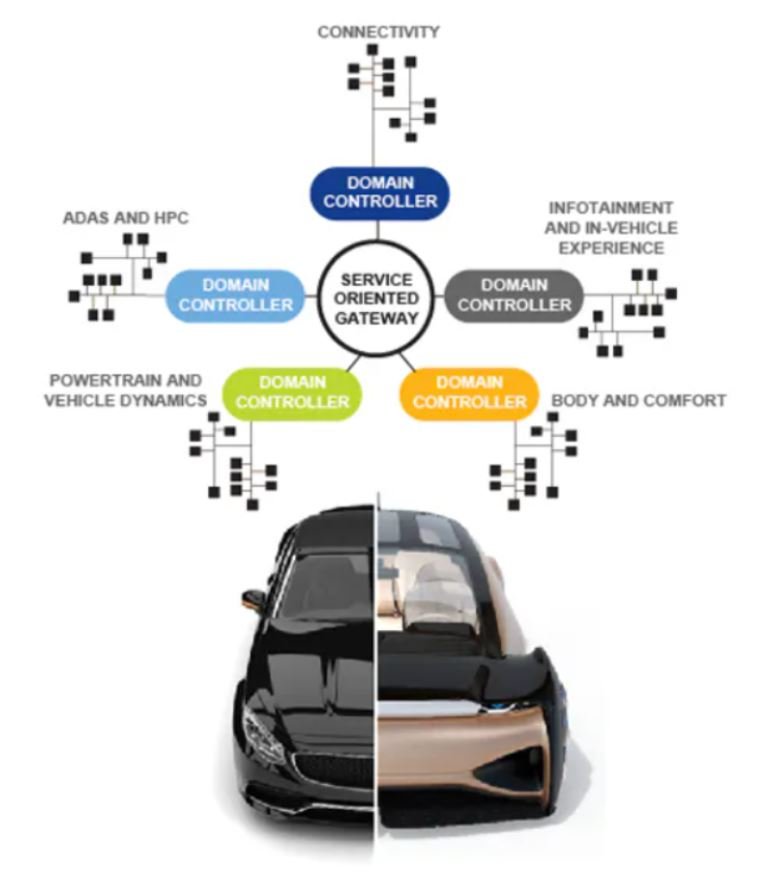
In Zonal architecture, the car contains between 70-100 ECUs. In future vehicles, OEMs wants to consolidate these into fewer units, so that less wiring is used, and more flexibility is there to upgrade the vehicles with new technologies. How far this consolidation should go, is a point of major debate. Here comes the zonal architecture
Zonal Architecture
The idea behind zonal architecture is that instead of organizing the arrangements of automotive electrical/electronic parts by domain, a zonal approach organizes the arrangement according to the location where these parts are to be fitted. That is in the case of Zonal Architecture, automotive vehicle is divided into different zones according to different location of the car.
The photo illustrates the concept behind zone architecture better.
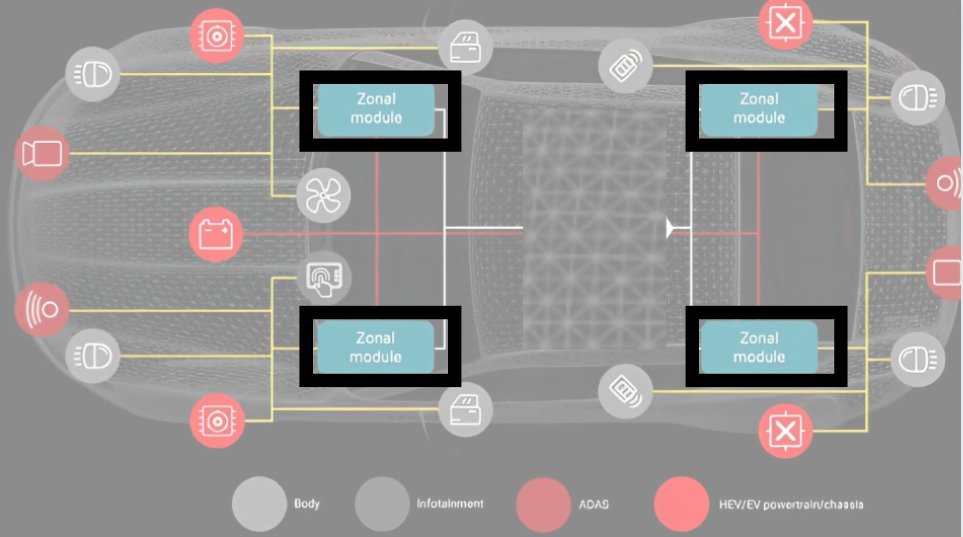
The idea behind Zonal Architecture in Automotive
These zones can have different electrical/electronic parts of different domains, depending on the location of the car. Lets say their is a Zone module A, which is at front of the car having different systems of different domains that are required in front of the car.
Integrated ECUs that connect domains enable information exchange and integrated control, which was previously performed separately for each domain, which reduces the number of parts and development costs.
Examples of New Vehicles Using Zonal Controller Architecture
Audi A8
Feeatures multiple domain controllers controlling various zones such as infotainment, driver assistance, and chassis control
BMW iNEXT
features five main zones controlled by domain controllers, including powertrain, braking, and driver assistance
Porsche Taycan
uses a zonal approach to integrate its electrical and electronic systems, with separate control units for the powertrain, chassis, thermal management, instrument cluster, and infotainment.
The Zonal E/E Architecture concept is a technical evolution that is a robust solution to meet the new generation of automotive vehicles and fit futuristic technologies into the vehicle. High-speed communication network, the creation of multi-function ECUs, and vehicle software Service-Oriented Architecture.
The E/E Zonal Architecture concept developed for the automotive industry introduces two new device classes, the Vehicle Server (central compute) and the Zonal Gateway( zonal controller), that reduce the number of physical ECUs and enable the use of Ethernet and a variety of flexible or hybrid communication network topologies.
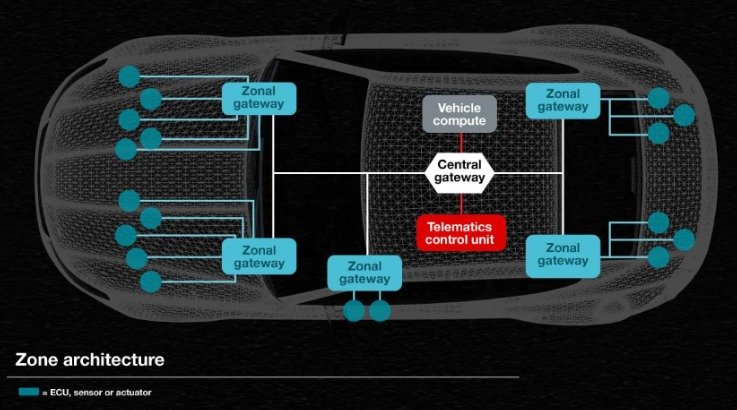
The Vehicle Server(Central Gateway) optimizes the computational resources by consolidating the number of physical ECUs, reducing H/W components, and wiring resulting in less weight and overall cost reduction.
The Zonal Gateway acts as a local connectivity hub relaying data through a single high-speed Ethernet link to the backbone.
However, this approach needs modularity and flexibility.
Modularity means that there’s a high degree of commonality between system elements, such as ECUs, that will have the same hardware despite being used for different tasks. The operation of these devices will be defined by the software that’s embedded within them.
Flexibility refers to the ability of the vehicle’s systems to be tweaked and reconfigured over time. Combining software-defined ECUs with the ability to deliver over-the-air (OTA) updates to firmware provides this flexibility and allows automakers to easily support the vehicles. This can include addressing software defects (“bugs”) as well as adding new features or enhancing existing ones.



